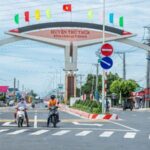During the French colonial period, the old Tan An market was not just an economic hub but also a witness to significant historical events. This area saw numerous uprisings and resistance movements by the people of Tan An against colonial rule, contributing to the nation’s struggle for independence. After 1956, when Tan An province merged with Cho Lon province to form Long An province, the old Tan An market continued to thrive, maintaining its role as the region’s commercial center.
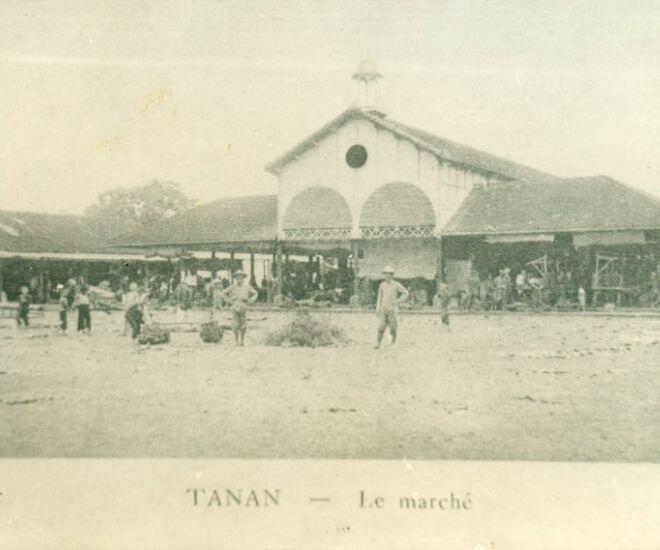
Located in a prime position, surrounded by bustling roads and a network of canals facilitating year-round trade, the old Tan An market always exudes a vibrant and bustling atmosphere characteristic of the Mekong Delta. As visitors stroll through the stalls, they immerse themselves in a rustic and intimate setting: gleaming fresh-water fish in basins, lush green vegetables from the orchards, and, most notably, an array of specialty fruits from Long An, Tien Giang, and Ben Tre provinces, filling the air with their fragrant scents.
According to the “Long An Geography” book, the Tan An market was once known as the Hung Loi market or Vung Gu market, situated south of the Bao Dinh canal and facing the Vam Co Tay river. This location used to be an ideal mooring spot for boats and ships, facilitating bustling cargo transportation. Even though the Bao Dinh canal is now blocked, and water traffic is not as vibrant as it used to be, the old Tan An market still maintains its position as the province’s largest commercial center, where produce from all over the province and neighboring areas converge.
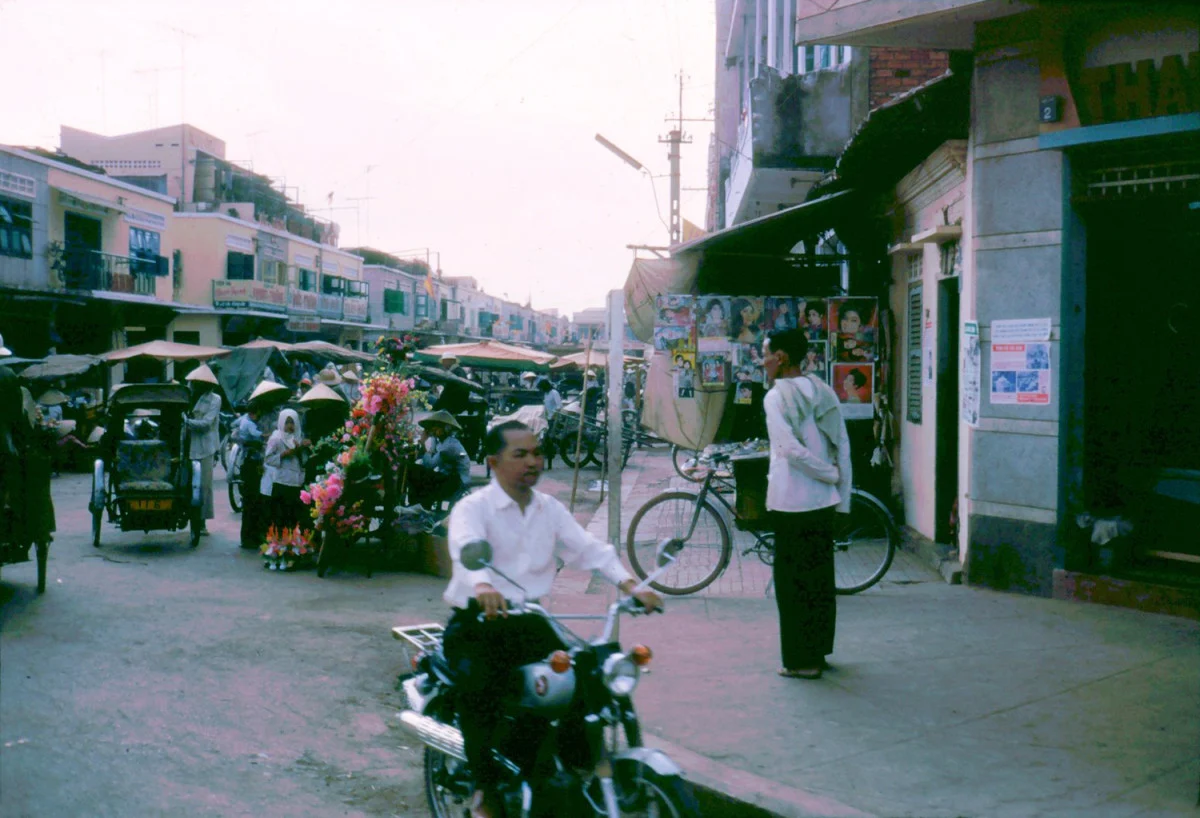
Beyond being a mere trading place, the market is a miniature portrait of the region’s lifestyle, economy, and culture. At the old Tan An market, visitors not only find goods but also experience the breath of a decades-old marketplace. Prices here might be slightly higher due to the convenient location, but that doesn’t deter visitors, as the core appeal lies in immersing themselves in the ancient atmosphere and observing the local people’s trading activities.
In the 1980s, the Tan An market was a bustling hub with a vibrant “above the wharf, below the boat” scene. Boats from Thu Thua brought bananas, from Ben Luc came sugarcanes, and from Moc Hoa came cassava and taro. During the Tet holidays, the market became even more bustling, with boats and barges from the Mekong Delta provinces docking to trade and local people from the districts flocking to shop for the holidays. Right by the canal was the fish market, followed by the meat stalls, and finally, the market hall with its vegetable and household goods stalls. The old Tan An market was once the “supreme” commercial center of Long An province, renowned for its typical Western region produce.
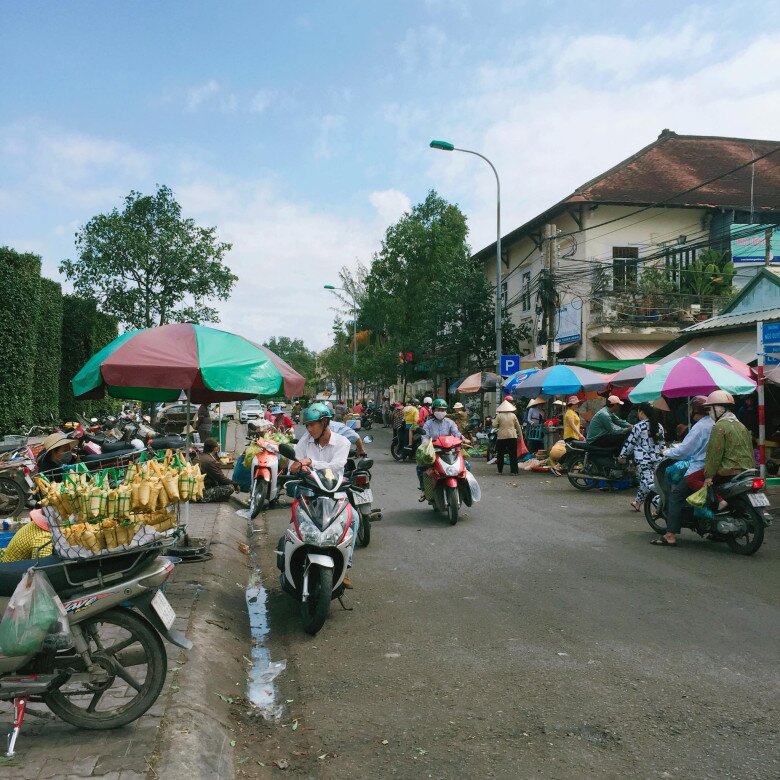
The journey of discovering Tan An becomes even more fascinating when visitors realize that the two markets bearing the name Tan An – the “old” and the “new” – not only coexist but also complement each other, creating a vibrant picture of development. While the old Tan An market takes visitors back in time, the new Tan An market, which started operating in early 2014, represents modernity and convenience.
The new Tan An market was constructed on a scale of one ground floor and one upper floor, covering an area of 1,000 square meters with 150 trading stalls. This “younger sibling” continues the mission of its “elder sibling,” maintaining the market’s vibrancy and contributing to the reputation of the Tan An market brand. The combination of these two generations of markets creates a unique feature, allowing visitors to understand the local people’s life and trading activities more profoundly throughout the flow of time.

However, with development, traditional markets like the Tan An market also face challenges. The emergence of smaller markets such as the markets in wards 2, 3, 6, and 7, the Khanh Hau market, along with dozens of supermarkets and convenience stores, has diminished the Tan An market’s once “supreme” status. In 2012, the old market hall was dismantled and rebuilt, officially reopening in 2014. Nevertheless, the market is not as bustling as it was in its golden days. The second floor of the market hall, which houses 46 ready-to-wear clothing kiosks, now has nearly half of them closed and up for rent. The first floor also sees sparse customers for shoes and cosmetics.
Even though it no longer buzzes with “hundreds of sellers and thousands of buyers,” the old Tan An market retains its unique position. The fruit and flower-selling area around the market hall remains bustling. For many local people and tourists who appreciate traditional culture, the market is still a familiar destination. It is not just a place for exchanging goods but also a space for socializing, meeting, and exchanging information. It has become an integral part of the community’s culture. No matter how society develops, the habit of going to traditional markets remains strong, and they maintain their own solid position alongside modern shopping channels.
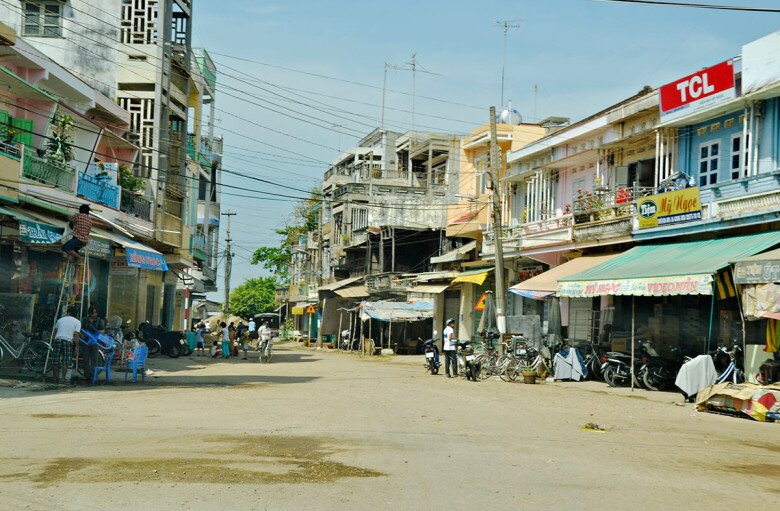
The old Tan An market, quietly walking through time, remains a sturdy symbol in the hearts of the people of Long An. It is not just a place for exchanging goods but also a keeper of long-standing cultural values and memories of a bygone era. The presence of both the old and new markets testifies to Long An’s appeal to tourists through its unique blend of simplicity and uniqueness, where the boundary between the past and the present seems like a fragile, thin line.
This wonderful characteristic promises to be one of the attractions drawing more and more tourists to Long An, those seeking not only scenic beauty but also authentic cultural experiences, where the past is “revived” and blended with novelty. The Tan An market, whether old or new, remains forever a “fortress” in many people’s hearts, a vivid symbol of a humble yet captivating land.


























